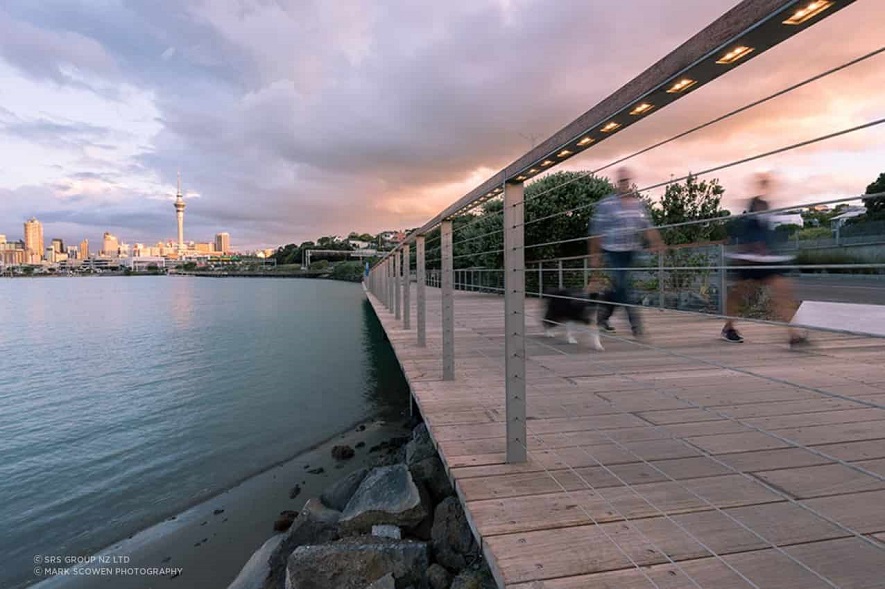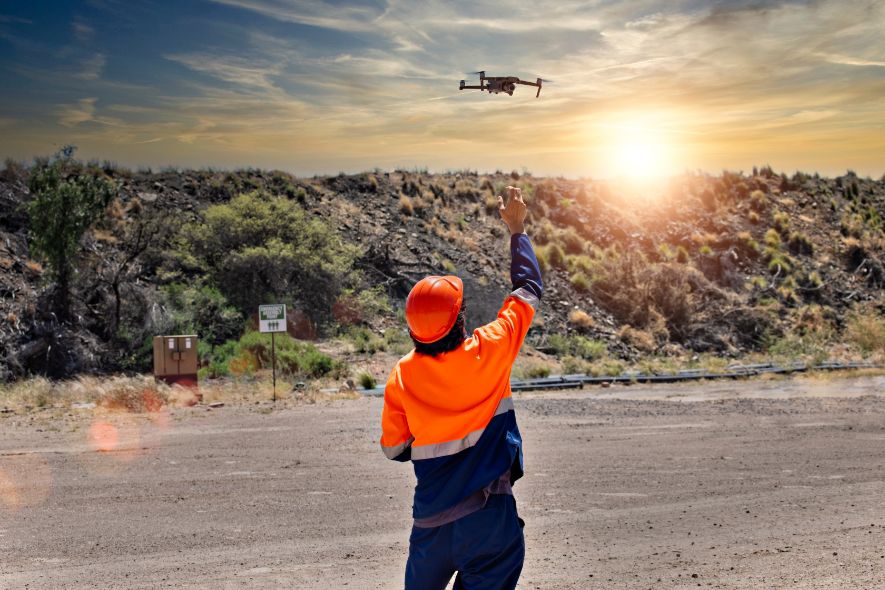Exploring the Latest Innovations in Civil Engineering Projects in New Zealand
New Zealand, a country renowned for its breathtaking landscapes and innovative architecture, is also home to several groundbreaking civil engineering projects. A leading light in this sphere is the SRS Group, a specialist in delivering high-quality, innovative civil engineering solutions. Our expertise and commitment to sustainability have earned a reputation for executing some of the most ambitious and technologically advanced projects in the country.
This article aims to delve into some of the recent exemplary works of civil engineering in New Zealand, spotlighting the significant contributions of the SRS Group.
Overview of Recent Civil Engineering Projects in New Zealand
One of the most notable projects in recent years is the Tirohanga Whanui Bridge. The English translation of the name of this bridge is “panoramic view”: a grand, fitting name for a project originally conceived as no more than a means to carry a water pipe over the motorway. The bridge, by Wells Architects, connects pedestrians and cyclists on the Albany and Pinehills sides of the northern motorway, thus providing a means for potentially thousands of people to rethink the way they commute to work, go shopping and head into Albany town centre for entertainment and recreation. This innovative structure was designed with both aesthetics and functionality in mind. With its visually striking curves that mimic the surrounding landscape, the bridge is a testament to the harmonious blend of engineering prowess and aesthetic vision.
The Northcote Pedestrian Bridges is another project that showcases the integration of civil engineering and community needs. These bridges were designed to facilitate safer pedestrian and cyclist movement across the motorway, while also serving as an iconic feature of the Northcote landscape.

In the realm of urban development, the Wynyard Wharf Balustrades project stands tall. The balustrades, installed along the waterfront, contribute to the overall appeal of Auckland’s cityscape. Their robust design meets safety standards while enhancing the aesthetic appeal of the waterfront.
The Auckland Zoo project was a unique opportunity to merge civil engineering with environmental conservation. The development of animal enclosures and visitor facilities required a careful balance of structural design and animal welfare considerations, which was successfully achieved.
Lastly, the Downtown Carpark Screening project in central Auckland is a prime example of urban utility engineering. The screening was installed to enhance the visual appeal of the carpark building, transforming it into a vibrant and appealing part of the cityscape.
Each of these projects, in their unique way, illustrates the breadth and depth of the SRS Group‘s capabilities in civil engineering.
Analysing the Differences between Traditional Engineering Approaches and Modern Ones
In the past, traditional engineering approaches were primarily driven by function, with aesthetics often being of secondary concern. The goal was to design structures that were sturdy, reliable, and fit for purpose. However, with advances in technology and the increasing emphasis on sustainable and aesthetically pleasing design, the field of engineering, particularly civil engineering, has undergone significant transformation.
Modern engineering approaches, on the other hand, strive to balance function with form and sustainability. They aim at creating infrastructure that not only serves a function but also enhances the visual appeal of the surroundings and minimises the impact on the environment. This shift is evident in the increasing prevalence of green buildings, pedestrian-friendly infrastructure, and urban spaces that integrate natural elements.
Moreover, the role of technology in modern engineering cannot be understated. From using CAD software for intricate designs to incorporating cutting-edge materials, technology is at the forefront of the modern engineering approach.
These contrasting approaches underline the dynamism of the engineering field and its evolution in response to societal needs and technological advancements.
Understanding the Role of Technology in Revolutionising Civil Engineering Projects
In recent years, technology has played a central role in revolutionising civil engineering projects. Particularly in New Zealand, the utilisation of advanced technologies has amplified the efficiency, innovation, and sustainability of engineering projects. Building Information Modelling (BIM) technology, for instance, is being widely adopted in the country to streamline construction processes. It provides a digital representation of the physical and functional characteristics of a facility, aiding in decision-making across the life cycle of a building, from inception to demolition.

Another notable technological advancement is the use of drone technology. Drones provide aerial perspectives and high-resolution data, enhancing the surveying process and enabling civil engineers to manage, plan, and execute construction projects more efficiently.
Furthermore, Geographic Information Systems (GIS) have been instrumental in spatial data management in numerous engineering projects across New Zealand. GIS helps civil engineers analyse and visualise geographic data, thus improving project planning and design.
Through these advancements, it’s clear that technology is reshaping the landscape of civil engineering in New Zealand, providing innovative solutions to traditional problems, and paving the way for more sustainable and efficient construction practices.
Examining the Benefits of Renewable Energy Sources for Civil Engineering Projects
Renewable energy sources, such as solar, wind, and hydropower, are increasingly being incorporated into civil engineering projects, offering several compelling benefits. Primarily, these resources are abundant and sustainable, minimising the environmental impact of construction works.
In New Zealand, the Aotearoa Wave and Tidal Energy Association are promoting the use of marine energy in civil engineering projects. Various projects are underway, harnessing the power of the country’s extensive coastline to generate energy.
In Australia, solar energy is being widely adopted in construction projects. The Sydney Theatre Company provides an excellent example, with one of the largest rooftop solar installations in the country. This initiative demonstrates the significant cost savings and environmental benefits that can be achieved with renewable energy.
Wind energy, too, has significant potential. The Macarthur Wind Farm in Victoria, Australia, is one of the largest in the southern hemisphere, showing the viability of wind power for large-scale civil engineering projects.
Through these examples, it’s evident that renewable energy sources are not only feasible for civil engineering projects, but they also contribute to the sustainability and economic efficiency of these endeavours.
Exploring Innovative Technologies Used for Optimising Project Delivery
Innovative technologies are transforming the way civil engineering projects are delivered in New Zealand. A notable example is the adoption of Building Information Modelling (BIM). BIM not only allows for improved project visualisation but also facilitates better collaboration, resulting in streamlined processes and a reduction in construction waste. It’s no surprise that firms such as Jasmax and Warren and Mahoney are champions of BIM in New Zealand.
Another key innovation is the use of drones in project surveying. Drone technology makes it possible to collect comprehensive and accurate data, even in hard-to-reach areas, thus enhancing decision-making. The Crown Property Bureau has been pioneering the use of drones for land surveying in the country.
Lastly, 3D printing is shaping the future of construction in New Zealand. The University of Canterbury has been at the forefront of research into the 3D printing of concrete, which could revolutionise the construction industry by reducing labour costs and enabling the creation of complex structures.
These innovative technologies are not only optimising project delivery in New Zealand but they also have the potential to redefine the global standards of civil engineering.
Investigating the Challenges Facing Civil Engineering Projects in New Zealand
Despite the remarkable advancements in technology, civil engineering projects in New Zealand encounter a unique set of challenges. Chief among these is the geographical uniqueness of the country; the diverse terrain and seismic activity necessitate careful planning and specialised construction techniques to ensure infrastructure resilience.
Additionally, there’s the challenge of managing environmental impact. As New Zealand is renowned for its pristine environment, there’s a pressing need to adopt sustainable construction practices, which requires both investment and a shift in traditional methodologies.
Furthermore, the industry grapples with a skills shortage. The demand for skilled civil engineers often outstrips supply, creating project delays and increasing costs. This shortage is further exacerbated by the country’s isolation and stringent immigration policies, making it difficult to attract overseas talent.
Lastly, regulatory hurdles present another obstacle. The need to adhere to robust building codes and environmental regulations can lead to extended project timelines, adding complexity to the project management process. Despite these challenges, New Zealand’s civil engineering sector continues to adapt and innovate, driving the country’s infrastructure development forward.
Evaluating the Potential for Future Growth and Expansion
Despite the hurdles faced, the civil engineering sector in New Zealand holds promising potential for future growth and expansion. With the government’s commitment to infrastructure development, there’s an increasing demand for civil engineering projects. This surge in infrastructure investment is likely to stimulate the sector, providing numerous opportunities for existing companies and potential new entrants.
Additionally, there’s a growing emphasis on green and sustainable construction. New Zealand’s commitment to environmental preservation opens avenues for the introduction of innovative, eco-friendly construction methods and materials, heralding a new era in civil engineering.
Moreover, advancements in technology also offer significant potential for growth. From digital modelling and simulations to the use of drones for site inspections, technology can significantly enhance efficiency, precision, and safety in civil engineering projects. These advancements also present opportunities for upskilling and reskilling, potentially addressing the current skills shortage in the industry.
However, realising this growth potential requires strategic planning and action. This includes initiatives to attract and retain talent, fostering public-private partnerships, adopting advanced technologies, and promoting sustainable practices. With the right strategies, the future of New Zealand’s civil engineering sector appears bright.
How SRS is at the forefront of Civil Engineering projects in New Zealand
SRS, whilst operating as just a cog within the vast machinery of civil engineering, plays a pivotal role in delivering innovative solutions to civil engineering projects all across New Zealand. Our approach is deeply rooted in our commitment to pushing the boundaries of what is possible, harnessing advanced technologies, and embracing sustainable practices. From contributing to major infrastructure developments to implementing green construction methods, our efforts are helping to shape a more sustainable, efficient, and resilient future for civil engineering in the country. We are, indeed, at the forefront of this thrilling transformation, and we take great pride in the valuable part we play in this dynamic industry.
At SRS, we are proud to partner with esteemed civil engineering and construction firms across New Zealand. This includes industry leaders such as Wells Architects, Warren and Mahoney, BECA, and LandLAB, among others. Working with these prestigious establishments enables us to broaden our horizons, gain diverse project experiences, and continually enhance our knowledge base. This collaborative approach empowers us to deliver exceptional engineering solutions, ensuring every project’s success, and shaping New Zealand’s built environment in a sustainable and efficient manner.
Our client portfolio also includes large-scale entities that have trusted us with their significant projects. We have had the privilege to deliver our engineering solutions for renowned clients such as Waka Kotahi, Auckland Zoo, Auckland System Management (ASM), and Panuku Development Auckland. These experiences have not only allowed us to make a substantial impact on some of the country’s most important infrastructure projects but also enriched our expertise, enabling us to handle diverse and complex challenges in the civil engineering sector.
